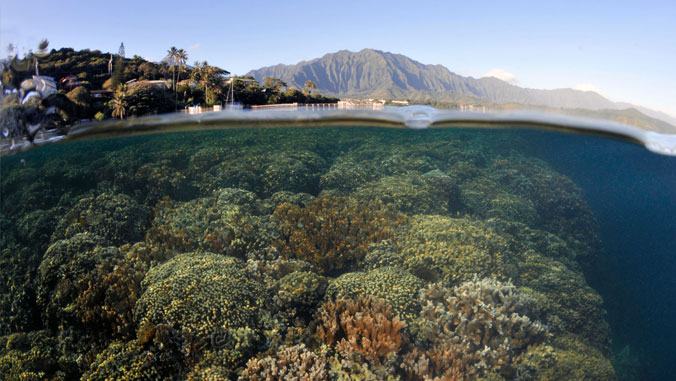
Naturally occurring super corals in Kāneʻohe Bay, Oʻahu, are surviving under ocean conditions that many predicted would decimate all coral reefs on the planet, according to researchers in the School of Ocean and Earth Science and Technology (SOEST) at the University of Hawaiʻi at Mānoa.
The research, funded by the UH Sea Grant College Program and published in the Proceedings of the Royal Society B: Biological Sciences, showed how reefs within Kāneʻohe Bay that were devastated by sewage inputs between the 1930s and 1970s recovered within 20 years after the sewage input was diverted. Amazingly, the reefs recovered while withstanding warmer temperatures and more acidic conditions than nearby reefs outside the bay.
“I discovered how unique the situation is in Kāneʻohe Bay during my doctoral research at UH,” said Christopher Jury, a Hawaiʻi Institute of Marine Biology post-doctoral researcher and study lead. “We knew that the temperature and chemistry conditions in Kāneʻohe Bay are very similar to the conditions that people predict will kill corals off globally, yet the reefs in the bay are thriving, making the area incredibly valuable as a possible window into the future.”
For the full story, see the SOEST website.
Learn more about UH research on coral reefs.
—By Cindy Knapman

